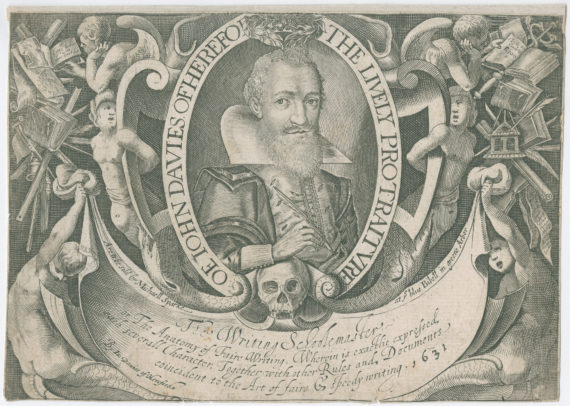Alongside learning to read, early modern children also, of course, needed to learn to write. This was a skill that required considerable physical precision and control when using a quill pen that could so easily scratch and blot the ink. Many of the struggles that early modern pupils underwent in this regard survive in the margins of books: popular places to practice at a time when paper was expensive.
An elegant ‘hand’ (handwriting) was considered an important social skill, especially for writing letters. As the title page of the textbook on the left shows, a book might itself be described as a ‘Schoolmaster’, so that the use of that book might make any space into a makeshift schoolroom. On the right is a page from Edward Cocker’s Tutor to Writing and Arithmetic, in which the owner of the book, Thomas Robinson, has been practising his penmanship. At the top of the page, he has written his name and the date, 1698.












